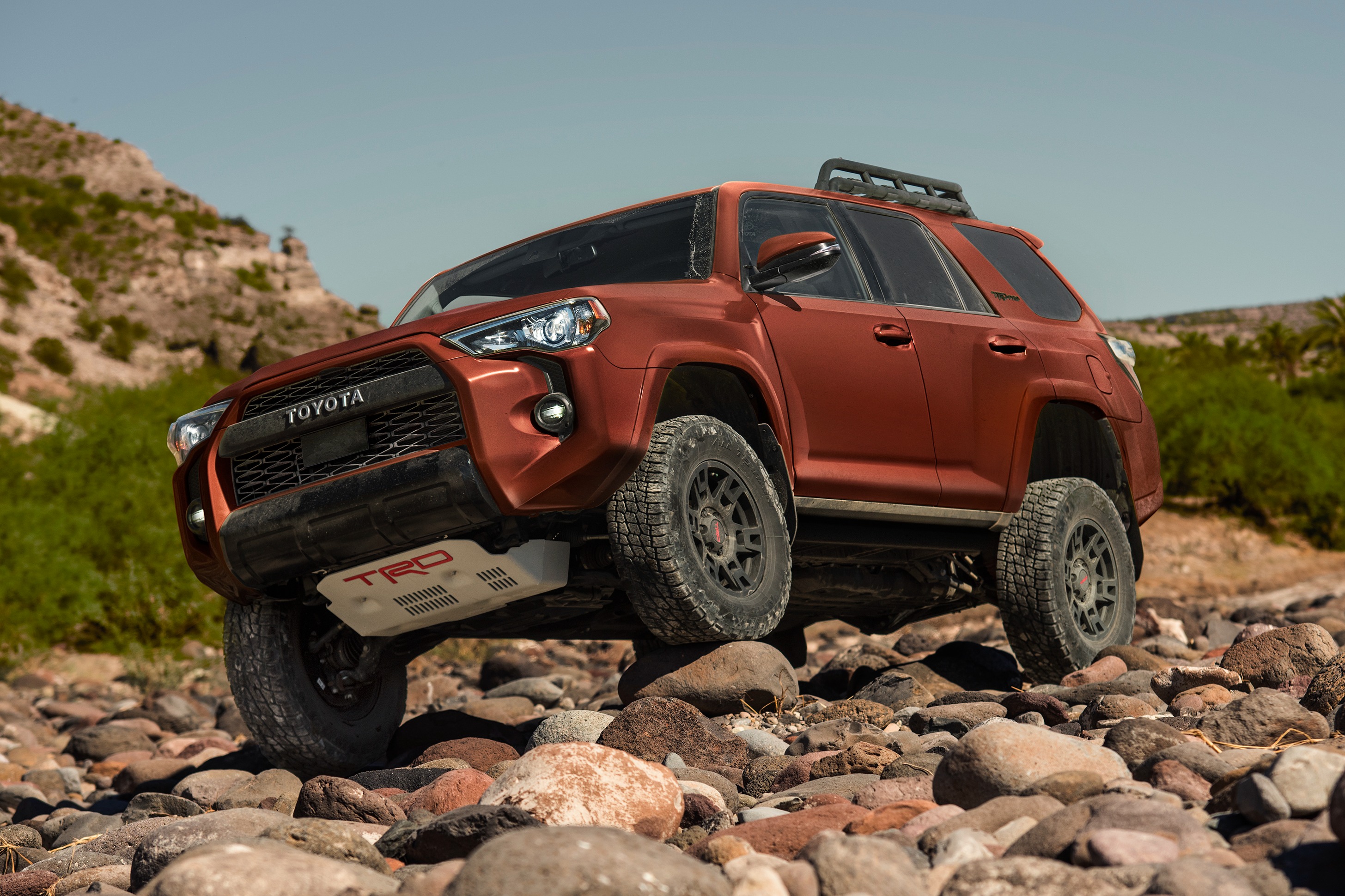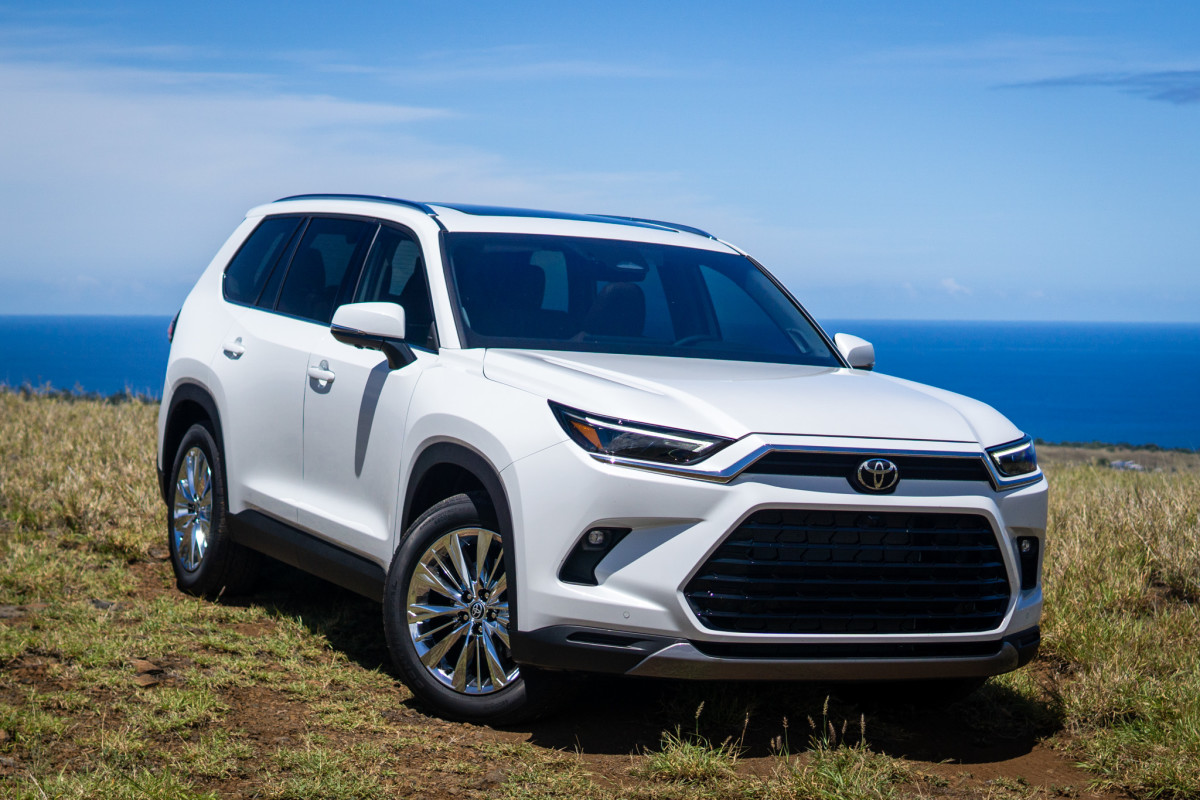Toyota 4Runner vs Toyota Grand Highlander
Overview | |
Years produced1984-Present | Years produced2024-Present |
MSRP$41,270 | MSRP$43,320 |
Listings9392 | Listings4070 |
Ratings & Reviews | |
User Reviews | User Reviews |
Expert reviews7.7 out of 10 | Expert reviews8.0 out of 10 |
Pros
Cons
| Pros
Cons
|
Reviews SummaryAfter a very long 15 years, we finally got a new Toyota 4Runner with more capabilities, power, comfort, and technology. It's also more efficient thanks to a new hybrid option and more composed on pavement, but it remains a solid all-terrain vehicle to extend your adventures further. Verdict: Toyota doesn't throw out the fomula with its newly redesigned 4Runner. Instead, the 2025 model keeps many of the features shoppers have loved for over a decade, while also adding a more contemporary selection of four-cylinder powertrains. | |
Reviews SummaryIf you have more than a couple of kids, chances are good that a regular Toyota Highlander won’t be big enough for all your needs. For many shoppers like you, the Kia Telluride and its corporate cousin, the Hyundai Palisade, have become the obvious choices. Those three-row crossovers are newer, bigger, and incredibly nice to drive. But now there’s a new Highlander. A bigger Highlander. A Grand Highlander. This all-new model takes a popular nameplate (which, don't worry, isn’t going anywhere) and adds a little extra space. But what separates the Grand Highlander from the field is the availability of not one, but two different hybrid powertrains. This all-new model offers plenty of space, good fuel efficiency, and Toyota’s sterling reputation for reliability. So, is the 2024 Grand Highlander an immediate threat to the hot-selling Kia Telluride? | |
Popular Features & Specs | |
Engine | Engine2.4L 265 hp I4 |
Drive Train | Drive TrainFWD |
Seating Capacity7 | Seating Capacity8 |
Horsepower | Horsepower265 hp @ 6000 rpm |
MPG City | MPG City21 |
MPG Highway | MPG Highway28 |
Engine | |
Engine Name2.4L 278 hp I4 | Engine Name2.4L 265 hp I4 |
Torque317 lb-ft @ 1700 rpm | Torque310 lb-ft @ 1700 rpm |
Horsepower278 hp @ 6000 rpm | Horsepower265 hp @ 6000 rpm |
Drivetrain4X2 | DrivetrainFWD |
Fuel Economy | |
MPG City | MPG City21 |
MPG Highway | MPG Highway28 |
Interior | |
Seating Capacity7 | Seating Capacity8 |
Key Features | |
Navigation System | Navigation SystemStandard |
Dimensions & Capacity | |
Cargo Space48.4 cu ft | Cargo Space20.6 cu ft |
Curb Weight4455 lbs | Curb Weight4300 lbs |
Height72.6 in | Height72.1 in |
Length194.9 in | Length201.4 in |
Width78.0 in | Width78.3 in |
Wheelbase112.2 in | Wheelbase116.1 in |
Maximum Payload895 lbs | Maximum Payload1245 lbs |
Number of doors4 | Number of doors4 |
Maximum Towing Capacity6000 lbs | Maximum Towing Capacity5000 lbs |
Standard Towing Capacity6000 lbs | Standard Towing Capacity |
Overview | ||
Years produced | 1984-Present | 2024-Present |
MSRP | $41,270 | $43,320 |
Listings | ||
Ratings & Reviews | ||
User reviews | ||
Expert reviews | 7.7 out of 10Read full review | 8.0 out of 10Read full review |
Pros & cons | Pros
Cons
| Pros
Cons
|
Summary | After a very long 15 years, we finally got a new Toyota 4Runner with more capabilities, power, comfort, and technology. It's also more efficient thanks to a new hybrid option and more composed on pavement, but it remains a solid all-terrain vehicle to extend your adventures further. Verdict: Toyota doesn't throw out the fomula with its newly redesigned 4Runner. Instead, the 2025 model keeps many of the features shoppers have loved for over a decade, while also adding a more contemporary selection of four-cylinder powertrains. | If you have more than a couple of kids, chances are good that a regular Toyota Highlander won’t be big enough for all your needs. For many shoppers like you, the Kia Telluride and its corporate cousin, the Hyundai Palisade, have become the obvious choices. Those three-row crossovers are newer, bigger, and incredibly nice to drive. But now there’s a new Highlander. A bigger Highlander. A Grand Highlander. This all-new model takes a popular nameplate (which, don't worry, isn’t going anywhere) and adds a little extra space. But what separates the Grand Highlander from the field is the availability of not one, but two different hybrid powertrains. This all-new model offers plenty of space, good fuel efficiency, and Toyota’s sterling reputation for reliability. So, is the 2024 Grand Highlander an immediate threat to the hot-selling Kia Telluride? |
Video | ||
Popular Features & Specs | ||
Engine | 2.4L 265 hp I4 | |
Drive Train | FWD | |
Seating Capacity | 7 | 8 |
Horsepower | 265 hp @ 6000 rpm | |
MPG City | 21 | |
MPG Highway | 28 | |
Engine | ||
Engine Name | 2.4L 278 hp I4 | 2.4L 265 hp I4 |
Torque | 317 lb-ft @ 1700 rpm | 310 lb-ft @ 1700 rpm |
Horsepower | 278 hp @ 6000 rpm | 265 hp @ 6000 rpm |
Drivetrain | 4X2 | FWD |
Fuel Economy | ||
MPG City | 21 | |
MPG Highway | 28 | |
Interior | ||
Seating Capacity | 7 | 8 |
Key Features | ||
Navigation System | Standard | |
Dimensions & Capacity | ||
Cargo Space | 48.4 cu ft | 20.6 cu ft |
Curb Weight | 4455 lbs | 4300 lbs |
Height | 72.6 in | 72.1 in |
Length | 194.9 in | 201.4 in |
Width | 78.0 in | 78.3 in |
Wheelbase | 112.2 in | 116.1 in |
Maximum Payload | 895 lbs | 1245 lbs |
Number of doors | 4 | 4 |
Maximum Towing Capacity | 6000 lbs | 5000 lbs |
Standard Towing Capacity | 6000 lbs | |

By: CarGurus + AI
At CarGurus, our team of experienced automotive writers remain at the heart of our content operation, conducting hands-on car tests and writing insightful guides that are backed by years of industry experience. To complement this, we are harnessing AI to make our content offering more diverse and more helpful to shoppers than ever. To achieve this, our AI systems are based exclusively on CarGurus content, ratings and data, so that what we produce is both unique to CarGurus, and uniquely helpful to car shoppers.









































